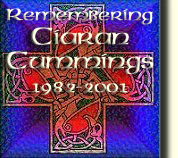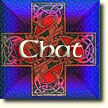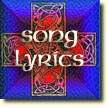

Lives lost in 'peace'
The book Lost Lives charts the human stories of the victims of the Troubles. Now, a new edition of the book includes those killed since the paramilitary ceasefires. for, as one of the book's co-authors Chris Thornton points out, even in "peacetime", the killings continue..
By Chris Thornton, Political Correspondent
cthornton@belfasttelegraph.co.uk
Date: 12 June 2004 Source: Belfast Telegraph
ONCE it seemed that no broadcaster from abroad could get through a report on Northern Ireland without using the phrase 'cycle of violence'. It's a cliché, sure, but a useful one for a two-minute report - it explains everything without enlightening anyone. Killing each other is what they do here. That's the way it is.
But there is at least a fleck of truth in every cliché. The Troubles may be over or in the middle of a prolonged demise, but what started back in the Sixties still resonates today.
Go back to 1973, one of the worst years of the Troubles. On successive days in April, the IRA shot a soldier, soldiers shot an IRA man, the UVF shot a Protestant republican, and loyalists killed a Protestant woman they thought was a Catholic.
In the midst of it all, a teenager named Joseph Adair was doubtlessly as gripped by the waves of violence as everyone else. He knew a loyalist friend had a gun, and he asked to see it. The 21-year-old friend, who admitted he was "half canned", obliged. But he slipped while he was showing off, and Joseph Adair died.
Ten years passed, and the man who accidentally killed Joseph Adair killed again. He was part of a group of UVF men who shot and stabbed George Taggart, a Protestant man who had somehow offended them. A teenager was with them, and by one account of the killing he was the one who leaned over and cut the dead man's throat.
Go forward another nine years, and the teenager who'd helped kill George Taggart was killing again. He led the UVF men who strangled Anne Marie Smyth, a Catholic mother of two, after meeting her in an east Belfast club.
One of the men who helped kill Anne Marie Smyth was Jimmy Manners. He would outlive his victim by nine years, but in 2001 someone caught up with him in a pub toilet in Newtownards and shot him several times.
There were 28 years and three generations of killers between the deaths of Joseph Adair and Jimmy Manners. The same period brought many changes to Northern Ireland, not least an enormous decline in the rate of killings.
Where people were once dying at a rate of more than one a day, the past three years have seen Troubles killings occurring about once a month. But even though the rate of violence has declined, treacherous circles are still in play.
That much is obvious from the new edition of Lost Lives, the stories behind the 3,700 deaths of the Troubles. The authors of the book are David McKittrick, Seamus Kelters, Brian Feeney, David McVea and myself.
Ten years after the ceasefires and six years after the Good Friday Agreement was reached, killing continues. The scenario is different - loyalists dominate the violence, for example - but the legacy goes on.
More than 50 names have been added to the toll in Lost Lives since it first appeared in 1999.
Of the 36 that were brought into the new edition, almost two-thirds were born after the Troubles began. Almost half were still children when the ceasefires were declared. Like Keith Rogers, an IRA member killed in a dispute last year, who was 15 when the IRA first declared its ceasefire. Or Alan McCullough, a UDA member killed in feuding last year, was 12 when the UDA signed up to its ceasefire.
McCullough's father had died before him, shot dead by INLA in 1981. Young Alan reportedly worshipped his father's memory and almost inevitably followed him into the UDA. By the time the boy became an adult, the Troubles had faded. But he was already in a cycle.
• Lost Lives is published by Mainstream, price £30.
May 4, 2001: Paul Patrick Daly, shot dead in north Belfast
After he climbed into his car two men walked up and fired up to nine shots. The killing was witnessed by his partner, who was seated in the passenger seat. He was widely reported to be a drug dealer with the nickname "King Coke". The killing was not claimed by any organisation but was blamed on the IRA.
May 27, 2001: Stephen James Manners, shot in Newtownards
A former UVF prisoner, he was shot in the downstairs toilet of a pub in North Street, Newtownards. Stephen James Manners was jailed for the murder of Anne Marie Smyth in 1992. A bail hearing was told that he was the second-in-command of the UVF in east Belfast at the time. He was part of a group of men and women who lured the Catholic mother-of-two to a house party in east Belfast where she was beaten and strangled. Stephen Manners allegedly fell foul of other loyalists in a dispute over money after his release from prison. When he was told of Stephen Manners' killing, Anne Marie Smyth's father said: "It doesn't relieve my pain one way or another. If he had a family, and he must have had someone connected to him, I understand the pain they will be going through now."
June 23, 2001: John Henry McCormick, shot dead in Coleraine
The Catholic father-of-two was shot by two loyalists who walked into the house he shared with his partner in Coleraine. They shot John McCormick in the living room in front of his two sons, aged four and six. A young niece and nephew also witnessed the killing. His partner, who was six months pregnant with the couple's third child, said: "They told me to get down on my knees. I said, 'No, don't be doing this in front of my wee ones' but they just went on into the living room and fired shots into his stomach and his head." John McCormick had been due to appear as a witness in a loyalist court case.
July 4, 2001: Ciaran Cummings, shot dead in Antrim
A loyalist gunman on a black motorcycle shot the 19-year-old as he was waiting for a lift to work. In 2002, Ciaran Cummings' mother said she was gratified that Protestant neighbours had attended a Mass marking the anniversary of his death. But the family home was attacked and vandalised by loyalists. "He's dead, they can't do anything to him any more, but they can still hurt me," said the teenager's mother. "You've killed my son. Now please let us live in peace."
July 29, 2001: Gavin Brett, shot in Glengormley
The 18-year-old Protestant student was shot by loyalists who assumed he was Catholic. A friend who was injured in the attack sent a message to his mother saying: "Tell Gavin's mummy that I'm sorry. Tell her that I'm sorry that he died and I didn't." Gavin Brett's father, a paramedic who had attended the Omagh bombing and other violent incidents ran to the scene but could not resuscitate his son. More than 100 colleagues of his father attended the funeral in their ambulance service uniforms.
September 4, 2001: Thomas McDonald, killed in north Belfast
The Protestant teenager was knocked from his bicycle by a Catholic woman after he stoned her car at a sectarian flashpoint. The woman, a mother-of-five, was taking children to an integrated school when he threw a half-brick which struck the car windscreen. The woman drove after him, the car throwing the teenager in the air. She was found guilty of manslaughter by reason of provocation. The judge described the original attack as "a calculated, unprovoked and potentially dangerous assault". But he did not accept the driver's claim that she had only intended to frighten Thomas McDonald, and ruled that she had intended to cause him harm in 'an impulsive moment'. He said he believed her actions were 'not the manifestation of sectarian hatred on her part'. She was sentenced to two years in jail followed by two years of probation.
November 11, 2001: Glen Hugh Branagh, killed in north Belfast
The 16-year-old member of the UDA's youth wing died after the pipe bomb he was trying to throw at police exploded in his hand. The incident happened as police were separating rioting factions. The inquest was told the blast severed his hand and caused severe head injuries. Glen Branagh died during a period when there were frequent clashes between nationalists and loyalists at interfaces across north Belfast. A senior police officer described the constant unrest as 'recreational rioting'. From June 1 up to the night of Glen Branagh's death, police statistics for the area said there 224 petrol bombings, 58 pipe bombings and 50 incidents in which blast bombs were thrown. The Irish Times reported that 371 police officers, eight British soldiers and 103 civilians were injured over the same period. Glen Branagh was a distant relative of the actor Kenneth Branagh.
December 12, 2001: William Stobie, shot in west Belfast
A former member of the UDA who disclosed he had once been a police informer, he was shot by a UDA gunman after leaving his flat. He was killed two weeks after he was cleared of murdering solicitor Pat Finucane. He admitted supplying the guns for the solicitor's killing, but maintained that he had provided information which could have saved Pat Finucane's life or led to the capture of his killers if the RUC had acted on it.
January 12, 2002: Daniel McColgan, shot in north Belfast
The 20-year-old Catholic was shot by two UDA gunmen as he arrived for work at a post office sorting office. His mother later said: "We have his voice on the answering machine. It cheers us up because he laughs before he says 'Leave your name and number'." She added: "Ultimately Danny's death will be like all the other murders. People will not even remember who he was, or even his name." In May 2002 the headstone on his grave was destroyed. His girlfriend said: "Daniel is dead. What more do these people want?"
July 21, 2002: Gerard Lawlor, shot in north Belfast
The teenager was shot a number of times in the back by loyalist gunmen as he walked home after a night out. He died at the scene, less than 100 yards from his home on the Whitewell Road. After the killing a senior police officer said 'the UDA is becoming very proficient at murdering children'.
December 27, 2002: Jonathan Stewart, shot in north Belfast
The young man was shot five or six times at an all-night Boxing Day party. The killing was related to a tit-for-tat series of shootings between UDA factions. He was not in the UDA but was the nephew of a prominent UDA man.
February 2, 2003: John Gregg, shot in north Belfast
A leading loyalist, he was shot dead by allies of UDA leader Johnny Adair. He was ambushed in Belfast docks on his way home after watching a Rangers football match in Glasgow. In 1984 Gregg had almost killed Sinn Fein president Gerry Adams in a gun attack, and was sentenced to 18 years for attempted murder. Released in 1993, he said his only regret was that he had failed to kill the republican leader. His UDA unit was held responsible for many murders. In the wake of the Gregg killing the Adair faction was expelled from Belfast's Shankill Road district, fleeing to Scotland and England.
March 12, 2003: Keith Rogers, shot in Co Armagh
He was shot dead during an incident in the south Armagh village of Cullaville. The IRA said he was a member but was unarmed and was not "on active service." The exact causes of the incident were unclear. At his funeral, prominent IRA figure Brian Keenan said he had been killed by criminals masquerading as republicans, describing the attack as "treachery carried out by a band of vermin". He declared: "This was not a dispute between gangs. It was a case of IRA volunteers being fired on by criminals." Keith Rogers was aged 15 when the IRA declared its ceasefire in 1994.
August 17, 2003: Danny McGurk, shot in west Belfast
The Catholic father of six children was shot by the Real IRA. His 73-year-old mother Mary said he had been beaten with hatchets and hammers a week earlier after standing up to local paramilitaries. She went on: "They're just cowards. He was a big strong fella - he didn't need a weapon, he just needed his hands. They are nothing but the devil's disciples and drug dealers." It emerged that the dead man had been convicted of manslaughter arising from a 1997 incident when a man died after being stabbed and beaten. He received a six-year sentence. In February 2004 dissident republican Bobby Tohill, who had denied any link with the McGurk killing, was involved in an incident in near the centre of Belfast when he was badly injured. Several men were charged, police saying they had interrupted an IRA attack.
November 8th, 2003: John Allen, shot in Ballyclare
He was shot twice in the head by two masked men at his brother's flat. The UVF was believed to be responsible. His brother described comforting him as he lay dying, saying: "He was on the ground and I went over to lift his head and blood came pouring out." His 80-year-old grandmother was among the mourners at the funeral.
John Allen's father said he saw the men who shot his son walking the streets every day. He went on: "It is very hard to take. I hate them more and more every day. It is eating me up. They murdered my son and they cannot be touched. They rule by fear and intimidation."





